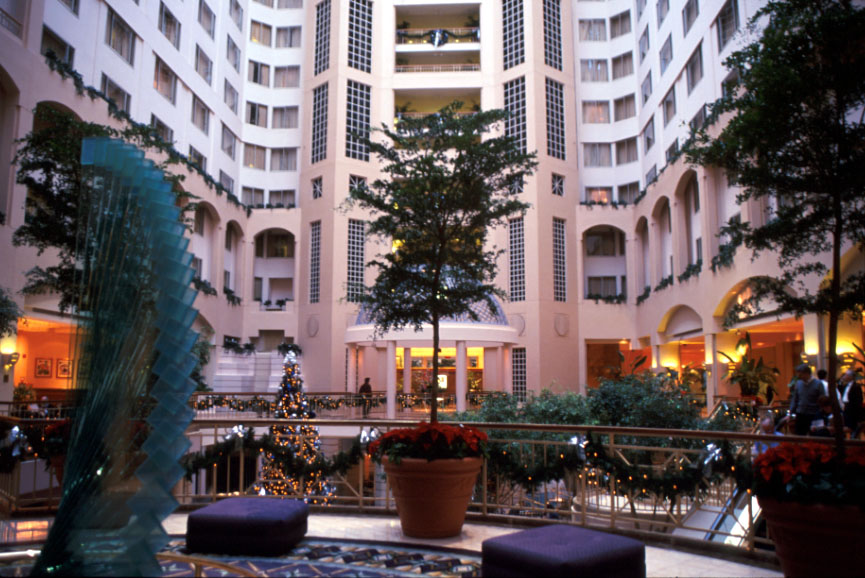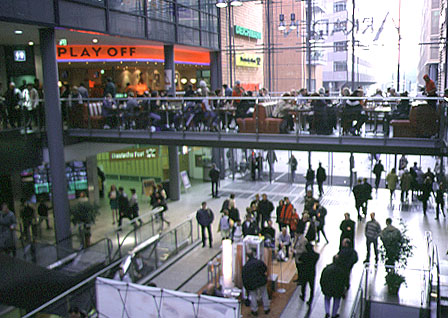

| Given the national split personality, dedicated to both the Hamiltonian realities of moneymaking and the Jeffersonian idealism of a self-sufficient agrarian Arcadia . . . . Almost since the dawn of the Republic, private wealth has not only aggrandized its position with Classical architecture, it has also provided the majority of the public settings -- the piazzas, arcades, palm courts, atria -- that enable most Americans to escape from the privacy and the loneliness of the home and the farm and share, at least for a while, public life. Many of our great public meeting places have been created and maintained by commercial enterprises. (Stern 1986, 222) |

|

|
Shopping has become the main ingredient of any new urban substance. The shift is colossal. The city used to be free; now you have to pay for it. We are witnessing the birth of the postpublic, the private city. It affects everything -- program, architecture, events. What is stunning is the somnolence with which we have watched this revolution, how casually we have tolerated our good intentions about city life to be perverted. (Koolhaas 2000, 42-3) |
(c) David Kolb, 1 August 2001